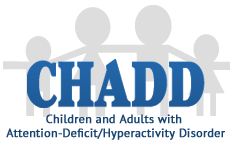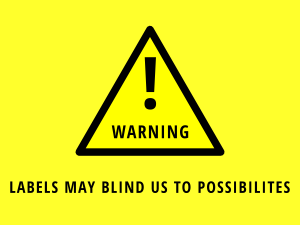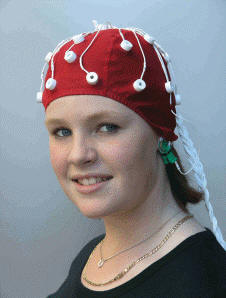 The Myth of the ADD Myth
The Myth of the ADD Myth
Review of The ADD Myth: How to Cultivate the Unique Gifts of Intense Personalities by Martha Burge (San Francisco: Conari Press, 2012)
Ms. Burge asks some provocative questions in this book, such as, “Intensity: Gift or Disorder?” While the word intensity here has a specific meaning, as described by Dr. Kazimierz Dabrowski as a particular giftedness, I appreciate her implication of how “intense” a person with ADHD can be. People with ADHD really are intense people; they feel intensely, they think intensely, they play intensely… and they fall apart intensely.
Ms. Burge, a life coach who practices in Southern California, has written this book to discuss the positive aspects of being intense in both the general and technical senses of the word. She writes compassionately about the people she has worked with who have a “deep sensitivity, a fullness of experience, a capacity for fantasy and creativity, and an intellectual curiosity” (p. xx), and who are not merely marred by attention problems.
She states that she developed her own theory of “intensities,” and then later discovered the work of Dr. Dabrowski, whose concepts described the same behaviors she had described. (See, for example, the Supporting the Emotional Needs of the Gifted (SENG) site for more information, or my blog post.) She came up with a great acronym for these different types of giftedness: SPICE. A person might be intensively Sensual, Psychomotor (Physical), Intellectual, Creative or Emotional. Generally, people who are gifted tend to be more “intense” in one of these 5 areas, and may have strong tendencies or talents in some of the other.
I want to point out that her approach may apply only to adults, and I am not sure all her ideas or suggestions can be used with children or adolescents. I have some criticisms of this book which mainly apply to how to help students function in a typical classroom setting.
A good point that she makes is that ADHD is “too common to be a disorder” (p. 18). There are many estimates of how many people have ADHD; I’ve seen research reports with 3%, 4%, 8%, 10% and even 15%. Over time, the numbers just keep creeping up. She poses a good question: “At what point do we look at a pattern of behaviors as within the normal range?” (pp. 18-19).
However, some points she makes are simply wrong. She claims that the National Institute of Mental Health (NIMH) estimates the number of people with autism is less than 1% of the population; their website states 2% (see http://www.nimh.nih.gov/news/science-news/2013/prevalence-of-parent-reported-autism.shtml). She states on p. 20 that “there are no objective tests that prove the existence of ADHD or any other psychiatric disorder,” but there are some biometric tests now for ADHD. She skirts the issue of the efficacy of medication; she states that meditation can help most people – without using drugs. She has a section of her book, pp. 4 – 11, entitled “Medication Goes in Search of Patients” which has misleading information. She states that CHADD, Children and Adults with ADHD, was funded and founded by a big pharma company. She implies that they were set up to support giving out medications, as if all the other very helpful advice they offer is mere placebo. Yes, the pharmaceutical companies have something to gain by funding a resource like CHADD, but much of the information requires a lot of education even to understand whether or not your child has a disorder or disability. Frankly, I can’t think of anyone who would want to identify as having ADHD — how can she say that “the disorder seemed to go in search of patients” (p. 4)?
She throws in a very scary comment, that “the very same people,” i.e., doctors, who encourage parents to buy medications, are the ones who “will also tell you that stimulants are deadly” (p. 5). Hold on now! Of course abusing any substance is deadly! But death-by-overdose affects a very small percentage of patients, usually those with a pre-existing condition, and the medication is prescribed so that it will not be abused! Of course stimulants can be deadly, but so can hormone replacement therapy, aspirins, and sugary foods that lead to diabetes. It’s just not fair to scare people into ignoring a valid treatment, medication, just to serve your own pet theories. I distrust this kind of non-objectivity.
She calls meditation “the drug to end all drugs” (p. 52). Her approach to helping her adult clients includes meditation, mindfulness, and understanding some intellectual constructs, such as “the internal map of reality” (p. 46). It has been my experience to witness people with ADHD to be able to relax and focus only after they have taken medication to regulate their brains. I agree that meditation is wonderful and that developing a sense of your “inner voice” is an essential part of growing up and healing. But I do not think it is fair to tacitly discredit the use of medication. Some people can’t get to the state of being able to meditate until after they medicate. As with most conditions, every person is somewhere on the spectrum … some people have an “intense” case of ADHD, and many of those people when undiagnosed turn to drugs and alcohol to soothe or self-medicate – leading to an unproductive life of addiction and substance abuse.
As Burge points out, many people choose not to meditate, or believe they can’t meditate, because it takes too long – and a pill is a lot more convenient. I would ask her and all the anti-medication people out there – please leave room for both. If you can succeed without medication, great. But if you are a child or a young adult who is failing in school, you may be limiting your future choices if you can’t perform tasks that require focus, concentration and completion. There are minimum requirements to get into college, and we all know that earning a college degree is one of the most predictable ways to be financially secure as an adult.
While I respect a parent’s desire not to give medication to his or her child, I hope that parent is able to provide the time and energy to support that child – including sitting with them during a daily meditation period – to teach them how to utilize the non-medication tools of meditation, visualization, deep breathing, stretching, and developing an inner voice. My experience is that most 10-year-old boys who have ADHD – it’s not a myth – do not have the self awareness yet to benefit from this kind of training. Yet, they struggle and suffer and lose their self-esteem as they watch, mystified, their grades plummet and the respect of their teachers and peers diminish. That can cause permanent damage.
I used to think that ADHD was a myth, too. “We never heard of it when I was a kid in school!” Then, I walked into an elementary school classroom, where I hadn’t been in over 35 years, and saw a young man sitting backwards on a chair, his torso hanging over the back of the chair, his shoes off, as he attempted to work on a piece of paper with a pencil. He was not a myth. His disability was real. He didn’t want to be that way; he didn’t know why he felt like he was crawling out of his skin when forced to sit properly. He just couldn’t pay attention because he was physically – and yes, to use Dabrowski’s term, sensually – out of balance.
 There is a right half and a left half, or hemisphere. While it looks similar from the outside, different kinds of activities get processed in specific sites in the brain. That’s why some people who have a stroke have trouble recalling words, while others lose the use of one side of their body (the opposite side to where the stroke happened in the brain, which is interesting). Also, there is a tube that connects the two hemispheres called the corpus callosum that allows communication between the different sites to coordinate.
There is a right half and a left half, or hemisphere. While it looks similar from the outside, different kinds of activities get processed in specific sites in the brain. That’s why some people who have a stroke have trouble recalling words, while others lose the use of one side of their body (the opposite side to where the stroke happened in the brain, which is interesting). Also, there is a tube that connects the two hemispheres called the corpus callosum that allows communication between the different sites to coordinate.





